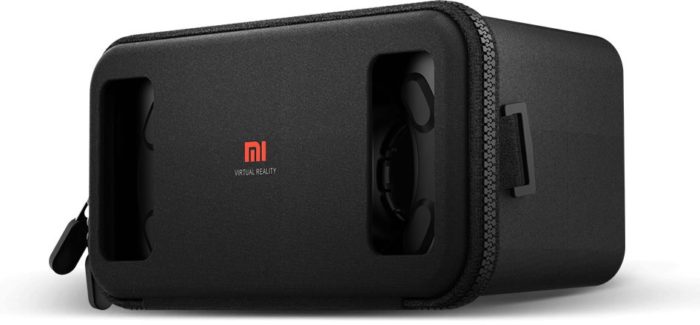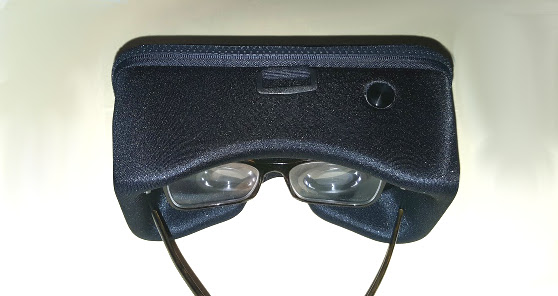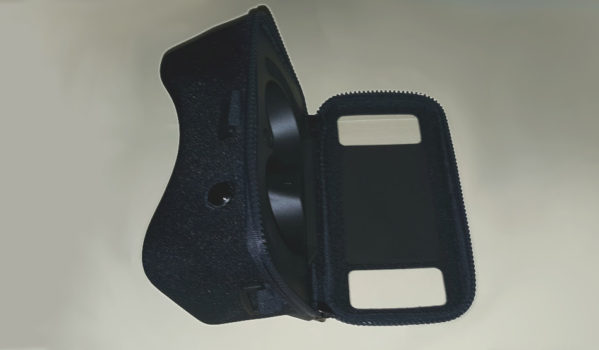Update: The folks at GeekBuying sent me a $5-off coupon to share with readers:Â XIAOMIVR5

So I just received a Xiaomi VR in the mail. The headset has been getting some attention in the media recently because Xiaomi is a giant brand, but the headset itself left me underwhelmed. It has some … interesting … design choices, but is missing some major must-have features.
Disclosure: I received a review version of the headset free from GeekBuying.
1. Field of view
Xiaomi says the field of view is 95 degrees. GeekBuying puts it at 84. My gut feel — without measuring it, since I don’t now how, to be honest – is that 95 degrees is about right.
This is not a wide, immersive view by any stretch of the imagination. I could clearly see the borders around the view. Plus, since there’s no padding around the face, light also leaked in unless I actually held my hands across the sides of the headset to block out the light.
So not very immersive at all.
2. Weight
It weighs just a little bit more than 7 ounces, which is very, very light.
3. Straps
Standard three-way straps. Make sure that you don’t throw away the padding inside the headset when you first get it — the straps are actually inside.
4. Fits over glasses

Yes, my glasses fit very comfortably in side the headset. And a good, thing, too…
5. Adjustable lenses
… because the lenses are not adjustable at all. You can’t move them farther apart or close together, and you can’t adjust the focus.
Most newer headsets on the market right now do have adjustable lenses, and with Xiaomi being a late player in the game, I would have expected them to pay attention to features like this.
6. Ready for augmented reality
There are cut-out windows on the front of the headset. But, at least in the case of my Samsung Galaxy S6 phone, they were not positioned to allow the phone’s camera to see out.
Your phone may vary, but if augmented reality is important to you, pick one of the many, many headsets that does a better job at this.
7. Fits over cables
You can undo the zippers from either side to allow the cables to pass through.
8. Controller
This is the one good thing about this headset — there’s a nice capacitative-touch button on the top of the viewer. If your phone is an iPhone and you can’t use external controllers — or you have an Android phone and just don’t like using external controllers — this is a must-have feature.
9. Price
The one that I received retails for $14 at GeekBuying. It is also available for $21 from Amazon, $21 from AliExpress and $12 from GearBest.
10. Ease of use
It’s very obvious how this headset works — you unzip the front, put in your phone, and zip it up again. In practice, however, I found it tricky to get the phone positioned right, and upzipping and zipping back up again got annoying when I had to switch apps.

In particular, the headset had a habit of closing out the VR app when I put in the smartphone, forcing me to unzip and zip repeatedly.
Not fun.
The headset itself is made of a soft, flexible material and is hollow, to reduce weight even further. So it’s reasonably comfortable. But the lack of padding around the eyes means that light gets in, unless you have a particularly flat, wide, head.
The headset did not come with a Google Cardboard QR Code. Come on, manufacturers, step up! What’s wrong with you!
However, GeekBuying did have one up with their product listing, and I’m pasting it below, and on my QR Codes page.
To use the headset, download the Google Cardboard app for iOS or Android and point it at the QR Code above. More details here.
Bottom line
I’m not a fan of this headset. While it is light, and it does have a control button, it’s also awkward to use, and the lenses are not adjustable. There are much better headsets on the market for the same price or less.
- Analysts predict drop in headset sales this year - March 25, 2025
- OSgrid enters immediate long-term maintenance - March 5, 2025
- OSgrid wiping its database on March 21: You have five weeks to save your stuff - February 15, 2025

